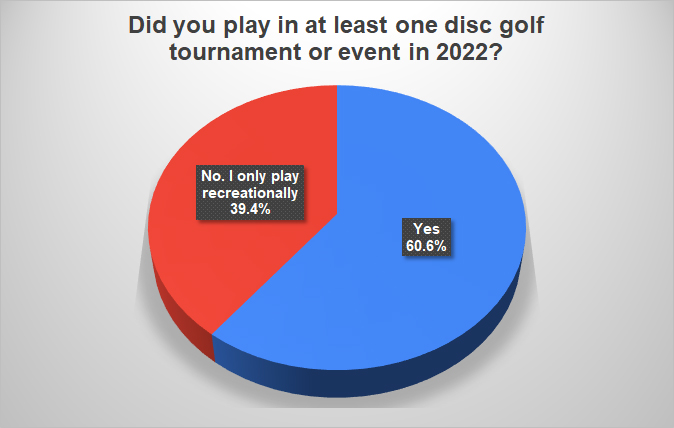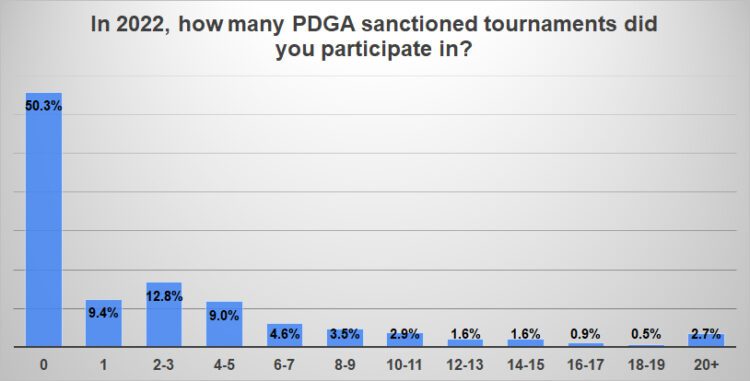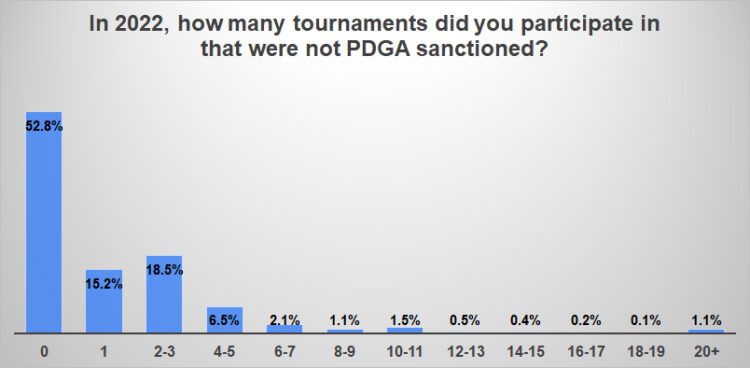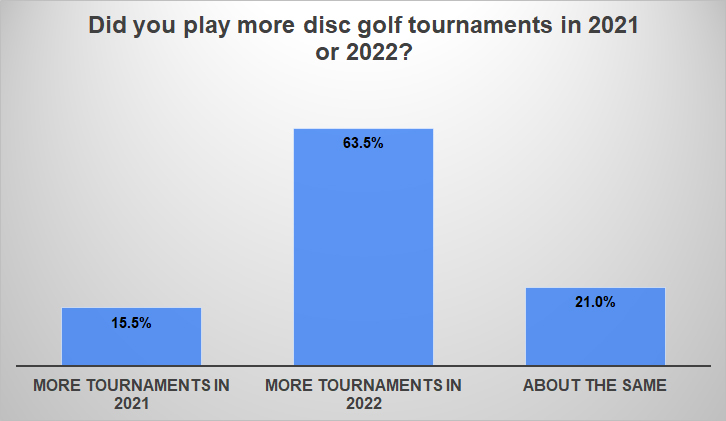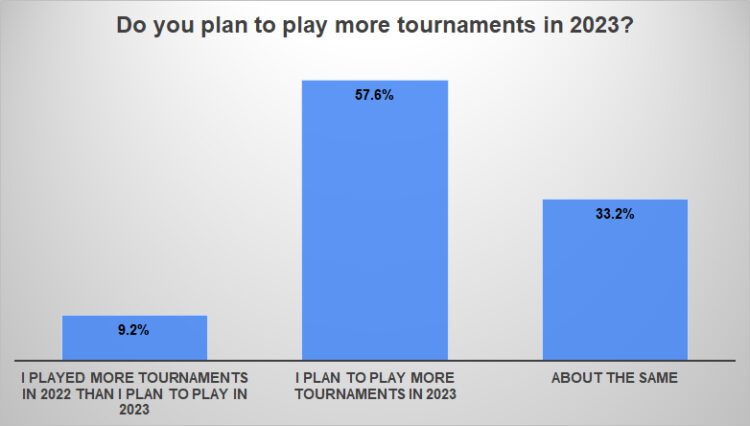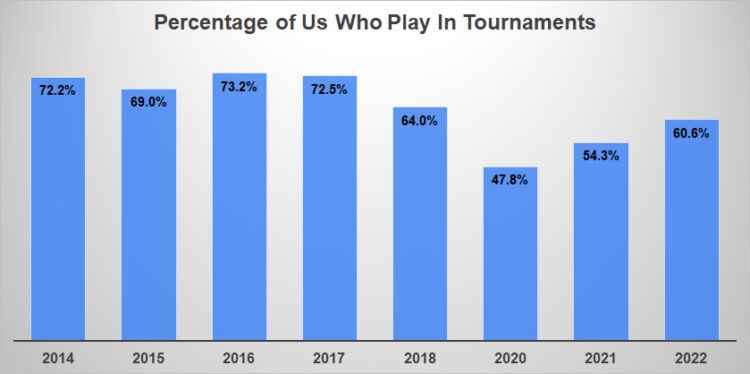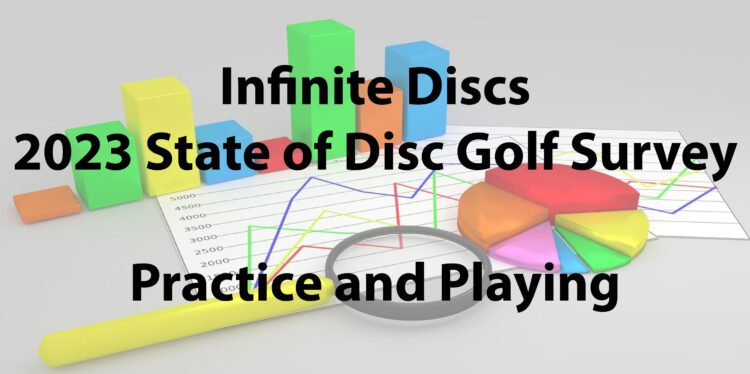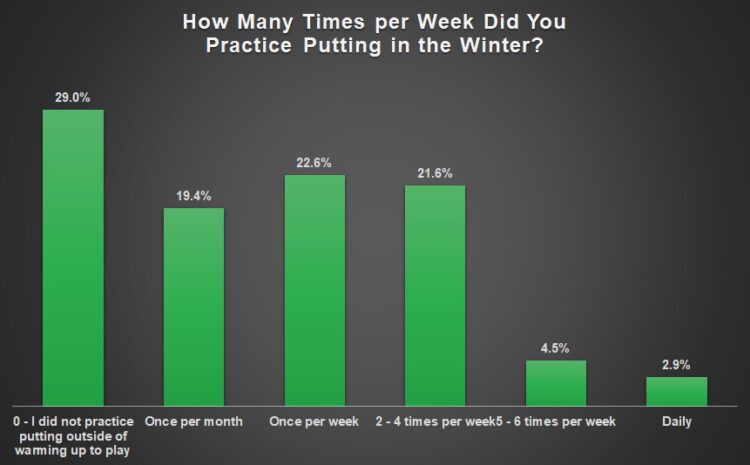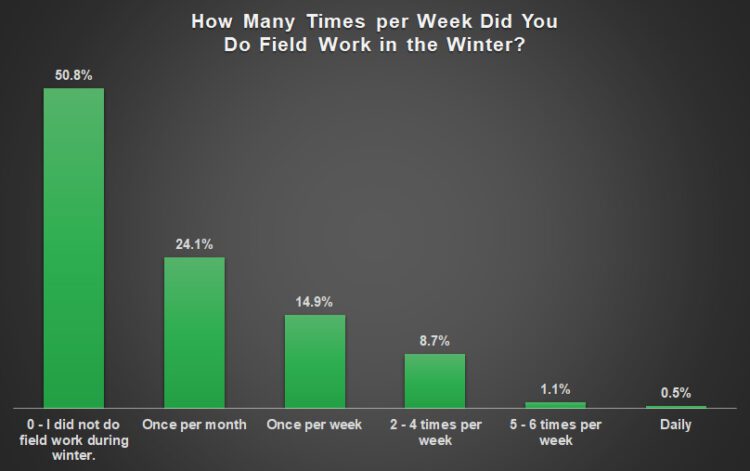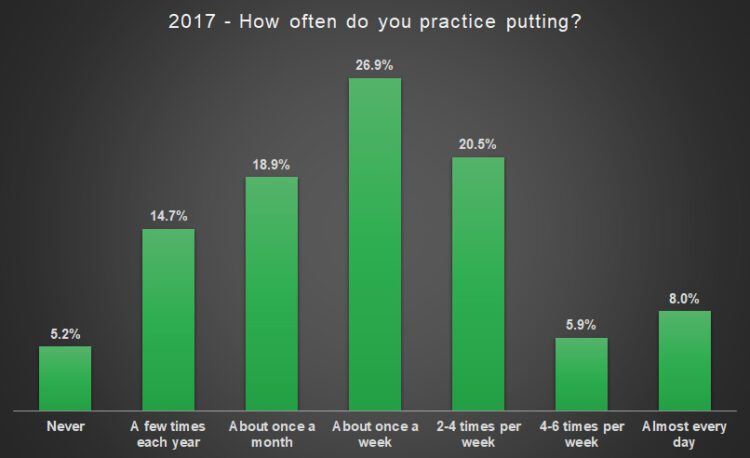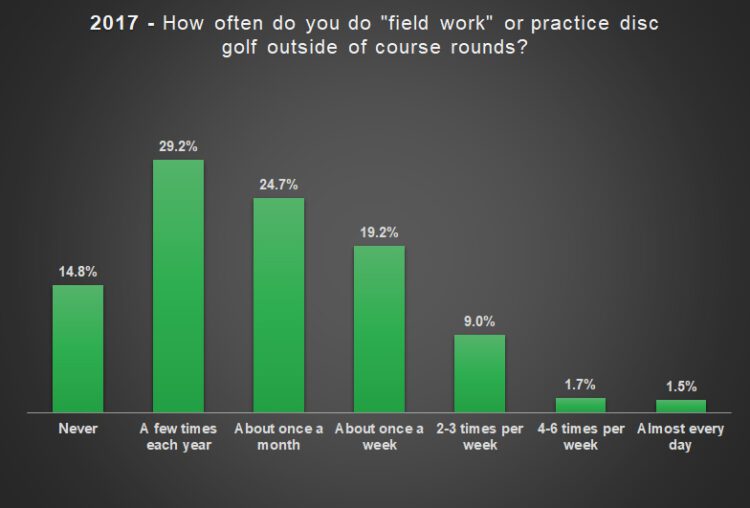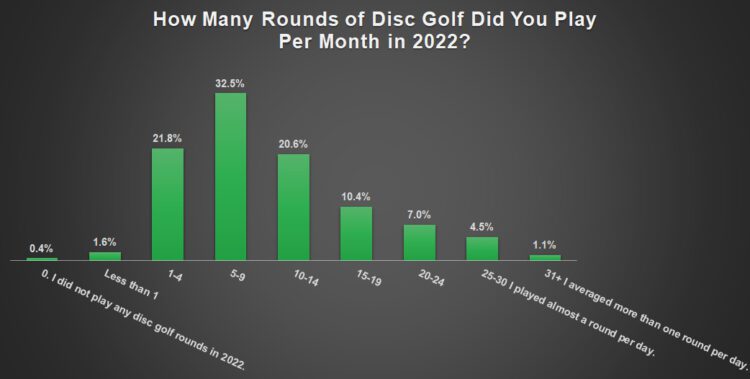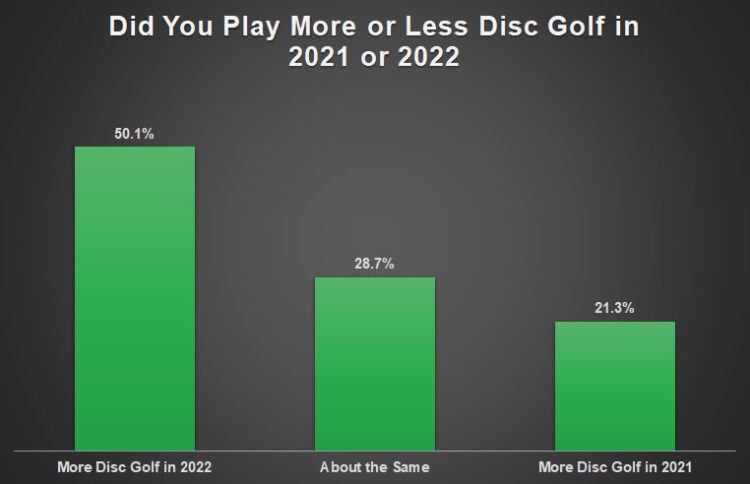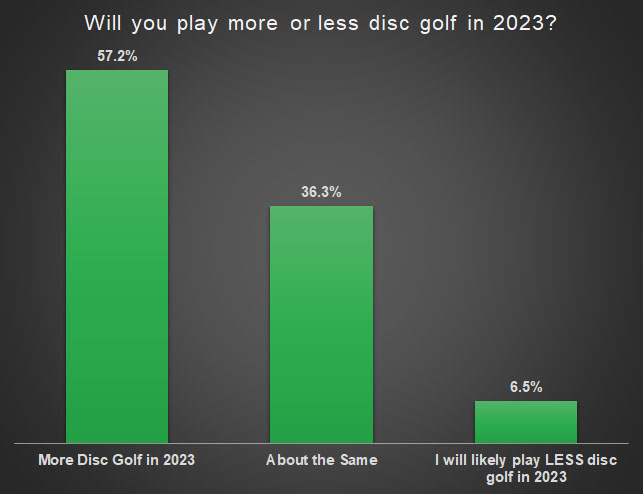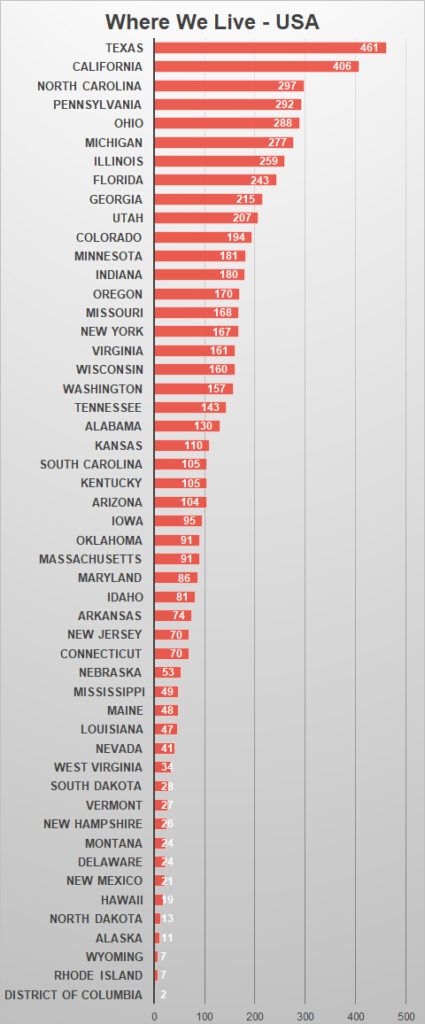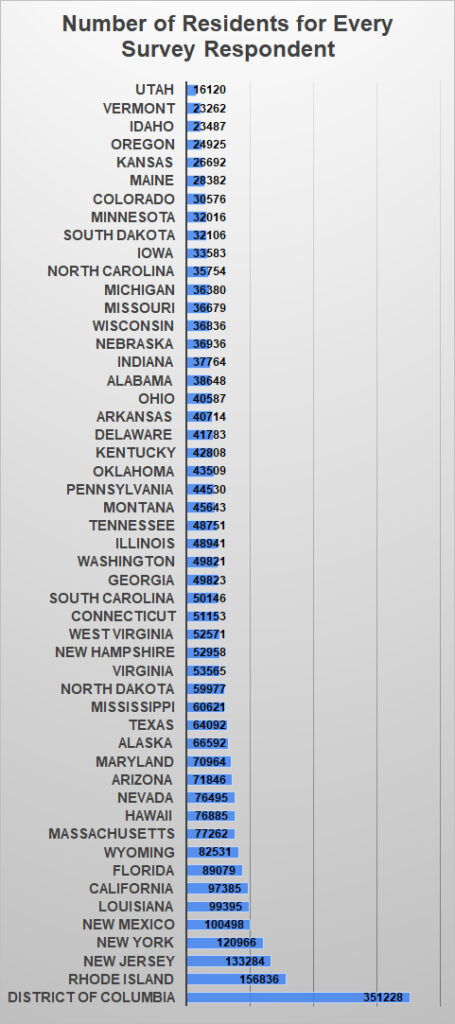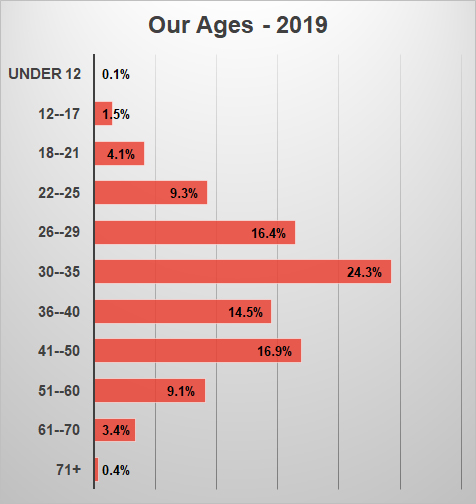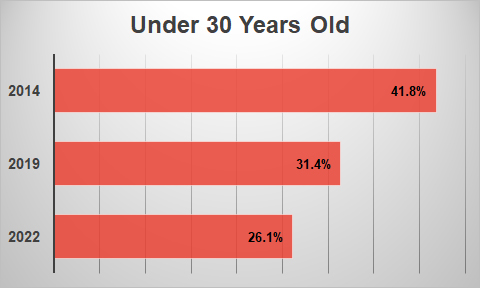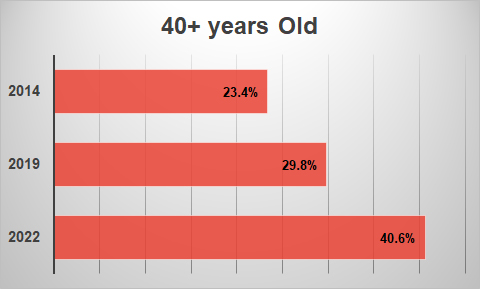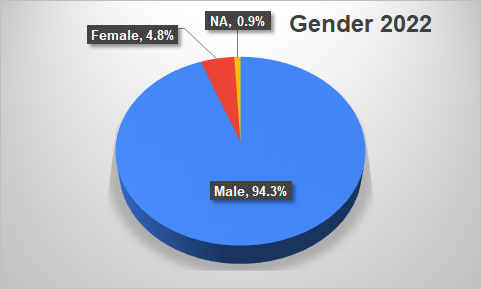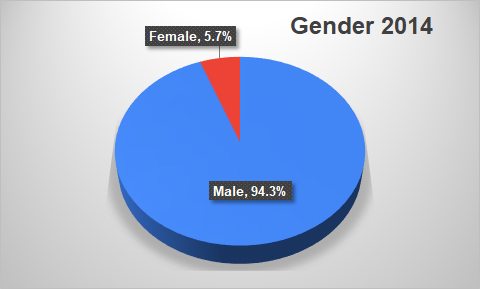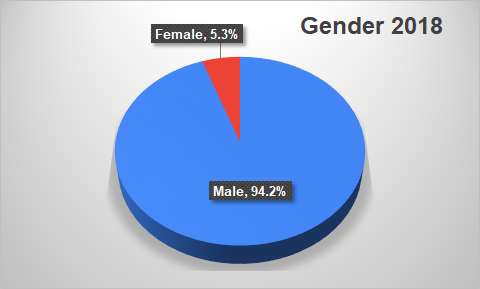
On January 4, 2023, Infinite Discs hosted new team member Eric Oakley (Aroc) on our Discord server where he answered your questions. Here is a transcript of the questions:
Beef Lips: May I start with a 2 year extension pog? First and most real question, Do you think with Paul McBeth skipping PDX, DDO,DMC and Preserve more touring pros will start playing European tour events in favor of some of these increasingly ball golf course tourneys?
Aroc: I think for the top players it will be an option, but for most players trying to make the DGPT Championships they will need to play those events!
Beef Lips: What new molds (besides the spice) are you trying out and most excited for?
Aroc: DGA Quake! Halo Dynasty as well!
Beef Lips: Everyone needs a bag, are you in works with a new bag sponsor and can you tease anything?
Aroc: I have a collaboration in the works. They are a European Company! Bags just hit the States so I should have them super soon!
Beef Lips: Disc golf AMAS are always full of “Whats your favorite tour stop”. What tour stop do you think is the most “fair” on average, considering OB lines/rules, usual weather (cough Kansas wind cough) and other outliers and factors us more casual players might not consider?
Aroc: Des Moines fashow!
Beef Lips: New van looks sick, have you named it yet?
Aroc: Her name is Nancy, Nancy Nissan, she is Fancy!
 DRB: How many hours per week do you practice? Can you elaborate on your practice routine?
DRB: How many hours per week do you practice? Can you elaborate on your practice routine?
Aroc: I practice about 5-7 days a week, mostly a mix of field work and course work. I’m trying to do 100 made putts a day. I try and use the field work to apply to my course work, and use my course work to give me stuff to work on for my field work. Probably, 60% Course work atm, 40% field work!
SuperBone: Did the crow hop in your backhand come naturally to you or was it something you added later on?
Aroc: It’s something I saw early on with Steve Brinster, and I adopted it when I was probably 15-16 years old and it stuck!
Schrodingers Joe: Hello, Eric! Long time listener, first time caller. Your first year with Infinite was your first year in a long time where you were able tp put any disc in your bag you wanted. When picking discs for certain slots in the bag, what were the deciding factors that made you lean towards a specific disc over a comparable mold from a different manufacturer?
Aroc: Partially based on the manufacture, I was always looking to support my main sponsors first, but in the end I need to throw what helps me perform the best. I always looked to go off of what felt the best and then what flew the best. I have a good basis of what slots I need to cover and I stick with that.
n8n: Who was the first touring pro that you hit it off with when you went pro? In your time touring, have you noticed any changes in how close touring professionals have gotten with each other?
Aroc: JohnE McCray was the first real pro I interacted with and it was HUGE for my development. I bonded incredibly well with Bobby Musick and he will forever remain one of favorite players of all time!
SeanFace: Do you have any special minis that hold some kind of importance or memory to you?
Aroc: Absolutely, I have some Saba Ping Minis that I love to support the POD and a few St Louis Blues minis I use. Tina also found a great mini she made for me that has been rotating in and out.
 SeanFace: Any west coast stops this year? I’ll be at the OTB Open and LVC
SeanFace: Any west coast stops this year? I’ll be at the OTB Open and LVC
Aroc: I’m hitting all DGPT Elite Series and a handful of Silver Series. I’ll see you at both of those!
Crokz: What discs should i swap out in my bag, or what should i do with my bag. I only bad Innova made molds 12. pd2(3) destroyers/dd3(7) 11. pdx(1) wraith(1) mamba(1) 10. pd(2) 9. fd3(2) cd2(1) sidewinder(1) roadrunner(1) 7. fd2(1) fd(3) it(1) 5. roc3(2) md3(1) mako3(1) 4. toro(1) roc(1 os and 1 flippy) 3. p2(1) tomb(1) dart(1) 2. jk aviar(2) 1. polecat(1)
Aroc: 12. Emperor for sure! 10. Spice 9. Scepter. Halo Dynasty, Sphinx. 7 . Exodus, Centurion 5. Chariot and Maria Anubis 3. ALPACA!!!!!! 2. ALPACA!!!!!
McShotty: What’s your favorite stamp design?
Aroc: Any of my TSA collaborations. Probably the Alpaca is my favorite, with the Dynasty/Pathfinder being a close second.
Beef Lips: WHEN WILL THE STAMP STORY BE REVEALED?!
Aroc: Story stamp video should be filmed here super soon. I’m working on the next set of designs with TSA atm. Including the introduction of our main antagonist and our first female character.
NoSkillManiac: Are you going to be at Champions cup?
Aroc: I’m planning on it, Just need the PDGA to open registration.
InfiniteDylan: Are you going to play Fall Guys during your 24 hour stream? 😛
Aroc: Fall Guys is on the docket!
Al Greazy: I got in a fight with my mailman today because I keep asking him where my Halo Dynasty is. He told me to ask you on the AMA instead of hitting him anymore. So…..
Aroc: They are on the way! The final release will line up with LVC, so a longer wait, but it will be worth it!
Finch: Any idea when we may see stock Spice? Didn’t get a box but would love to try one.
Aroc: Working on the stamp with TSA for the next release. Hoping for something super soon!
Myle: What is biggest advice for amateur who wants be marketable because wants be sponsored?
Aroc: Post often. Show the love for the game and that you are helping the sport grow even without a sponsor so anyone who comes along to sponsor you just amplifies the things you are already doing.
Crokz: What’s your favorite signature series disc of all time, any manufacturer?
Aroc: Not my molds, Calvin Heimburg Halo Destroyer. My mold Pathfinder/Dynasty/Alpaca/Spice 4 way tie LOL
Baja: Are you going to Waco this yea?
Aroc: I’ll be there!
RainbowSmaug: Who is your favorite cameraman on the Whale Pants YouTube channel?
Aroc: Ian, Erika’s Husband. GOT HIM! BOOM ROASTED!
TheHunter924: Who do you want to have on ‘is that good’ next?
Aroc: Planning on filming one with Missy Gannon and Paige Pierce here super soon. Hoping to get a handful more in 2023.
Mysterymirrors: Hey Eric. Can we get a special stamp on a Tomb for Easter? “The Empty Tomb” Pull some strings. Thanks for interacting with the infinite community so much!
Aroc: @InfiniteDylan this is a great idea LOL
Rivalmejr: What disc did you expect to love and ended up not being for you? In addition, what disc did you not think you’d like but then liked?
Aroc: I was expecting myself to love the Buzzz, but I ended up finding the Pathfinder and the angle I like to release on is so much better for the Pathfinder in comparison to the Buzzz.
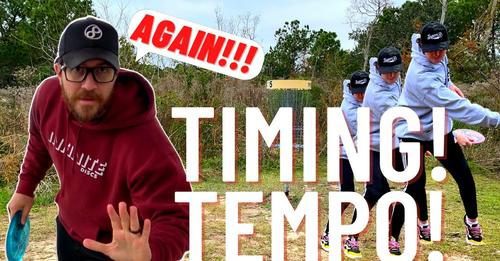 Myle: Are you ever thought about an ‘is that good’ video where you give amateur your new signature disc and they tell is it good?
Myle: Are you ever thought about an ‘is that good’ video where you give amateur your new signature disc and they tell is it good?
Aroc: I love this idea. This could be great for Youtube Shorts or Instagram Reels!
mandalorian540: With the berg, kotare, and spice you have done what seem like single disc sponsorships. I know this is something Drew has talked about before for open bag players. Do you see this as a future of the sport? OR will manufacturers eventually have all slots filled with the same quality of disc in a homogenized boring market?
Aroc: I think there’s too much of a stronghold from the big manufactures that it will be hard for it to become the norm. But it is definitely a possibility, we just need companies to understand the value.
TheHunter924: Can we get an “is that good” for different baskets?
Aroc: I love this idea. But this could easily make some people mad 😬
Kightsbridge: When not prepping for a tournament course. Do you practice on technical courses or bomber courses?
Aroc: I try and plan out what course is coming up next. If I have no event ahead I try and get a good mix so I can feel confident on both.
Crokz: How do your glow d-blend alpacas compare to imperial eagle 2s (glow p-line p2s)
Aroc: Imperial Eagles are Glow P-Line P2s and I wanted the Glow P- Blend Alpacas that I have for my tour series to be similar to the IE P2s. They are incredible and only get better with age.
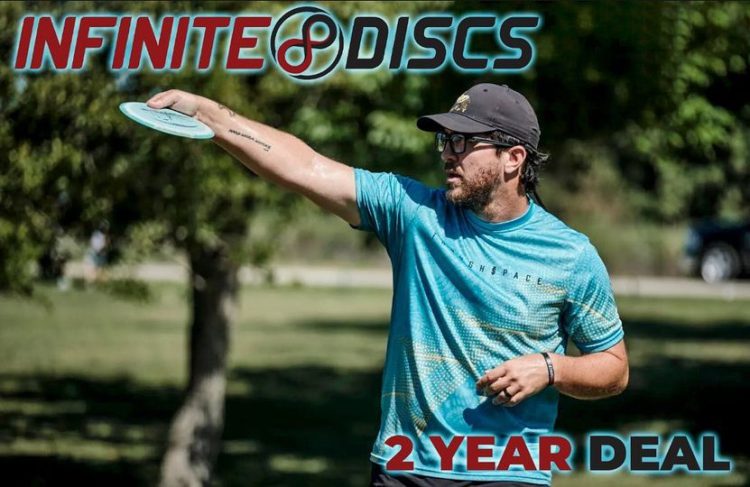 Cobra: Are there any out of production discs you wish you could bag but can’t justify because they’re hard to replace/expensive?
Cobra: Are there any out of production discs you wish you could bag but can’t justify because they’re hard to replace/expensive?
Aroc: Not atm. Infinite has helped work making some great molds that were hard to find before with their great relationship with Innova.
TheHunter924: Hey Eric, what is your favorite alpaca plastic?
Aroc: Glow P or D Blend.
i shot a pigeon: If there was a disc slower and less glidey than a Beorg, would you bag it?
Aroc: Nah, BEORG is BIS.
Crokz: If I gave you a cloudbreaker2 would you bag it?
Aroc: I have Emperors, so I don’t need CBs. Emperors are the perfect disc for me.
Unlucky: What were your favorite things about your Discmania van touring days? What do you miss about the scene / what has the scene lost since those days? What are you glad we’ve grown passed and don’t have to deal with anymore? Thanks for doing this Eric : )
Aroc: Just the simplicity of being on the road. But now it’s such a great touring scene and I love it. DM was such a great option for me to grow.
SeanFace: I stopped by OTB yesterday and grabbed a Lucid Justice, how scared should I be?
Aroc: They are good for one thing only… Fading.
TheHunter924: Can we expect an Eric Oakley Coalesce?
Aroc: Likely not, But there will be a tour series Coalesce from someone, no doubt!
SeanFace: Follow up: if you’ve thrown the Coalesce, how much does it differ from the Omen?
Aroc: Very Different. Omen is OS, Coalesce is more Thunderbirdish.
mandalorian540: Assuming the Pathfinder is the best mid in the sport, what’s the second best? And why is it the Ursus?
Aroc: Ursus just is so wonderful. It does everything I need and feels so good!
Spoot: What’s your favorite new mold from the past year?
Aroc: Dynasty and Pathfinder are the first that come to mind.
Ay lmao: What was it like to help design the Spice and what kind of disc do you want to have a hand in designing next?
Aroc: I’m wanting to keep working to make sure the Spice has a couple variations so we can love two slightly different runs that work perfectly together. Not sure what I would choose next since I’m just loving my bag so much atm.
Spoot: If you could have any doubles partner from any period in time, who would it be?
Aroc: Eagle McMahon or Vinny.
Baja: How far is your max distance forehand and backhand?
Aroc: Backhand If I’m feeling SUPER GOOD. Backhand is like 425-460 If I’m feeling CRAZY GOOD! But I focus on throwing 400-450 super accurate for backhands and about 375-400 for forehands.
HeroesNeverQuit: Are pros signed under an nda to not disclose what they are being paid etc, or do a lot not talk about it publicly for personal reasons?
Aroc: It’s all up to the pros and the sponsors what gets shared. Not sure what is best.
Mark IV: Favorite shot or moment in your disc golf career? Anything that really sticks out??
Aroc: Ft Stelly always sticks out. It really boosted my confidence that I was doing the right thing.
Baja: What do you think of Lone Star’s giant Ranger team?
Aroc: Hey, people are talking about their discs a ton now. Seems like a decent play, but we will see if they can keep it up.
Đę$iǤИęƦ D̸͘͜R̸̆͠Ṻ̷́G̵͛͋S̸̄̚: So how many TSA discs in the works for you?
Aroc: More Pathfinders for sure, and likely a small run of Votums.
Crokz: What are your thoughts on night strike fds, they are prob my most reliable fairway and i love them
Aroc: Exodus is super close and the Halo Centurion cover similar slots and they are SOOOOO GOOOOD!
Mark IV: I have pathfinders in glow, aura, and ethereal, for some reason I haven’t thrown an ethos one… why do you prefer the ethos plastic to the others?
Aroc: It was the plastic I first threw and loved it, I throw Ethos Mantra, Votum and Construct. Ethos and I just work… EthOs…. it makes sense LOL
SeanFace: Tomb or Praxis?
Aroc: Alpaca, Popcorn, Envy, Berg is my putter lineup.
Cobra: Who on tour last year were you most surprised about changes they’ve made to their game/personality?
Aroc: Gannon. Kid is just unbelievably confident and it’s so awesome to see.
McShotty: What gap in TSA’s lineup would you like to see filled?
Aroc: Maybe a stable Mid like Quake. Distance driver that has a little more go than the Synapse, or retool the synapse to get some dome!
TheHunter924: Biggest advice for breaking the 900 rating?
Aroc: Make smarter decisions. Play for Par and make your putts. Eating a bogey is generally better than trying to save par.
Bueno: You are on a deserted island with all your friends. In order to leave you must land a disc on the island next to you. 250’ (standard island distance) Island diameter 33’. One shot or your stuck for a month. What are you throwing?
Aroc: Pepper because it doesn’t skip!
Al Greazy: Real men throw dyed discs. Thoughts?
Aroc: Madd Discs helped me through puberty.
Crokz: Did you make the Spice to replace a pd
Aroc: Spice was meant to be more of a Felon/Firebird type disc, but the goal was for it to not be STUPID OS, it is meant to be throwable for all and super workable. I think we nailed it.
SeanFace: Have you had any misadventures flying with discs? Do you check your disc bag and has anything even gone missing?
Aroc: Always carry on my bag. Never checking my bag, but I do check my backups.
Crokz: What dynasty flies most similar to roaming thunder 2s?
Aroc: Depends on how OS RT2s are. Halos are the most OS like First Run C CD2s, Metal Flake Color Glow are a small step down from the Halos, S Blends are super workable and dead straight and I/C blends start kinda stable but beat in faster.
TheHunter924: Berg or glitch
Aroc: Different Discs. Berg is so unique and the Glitch is Sonic/Bite/Polecat like.
Al Greazy: I tend to have really sweaty hands in the summertime. Do you know of anything that can help me with this?
Aroc: WHALE SACS 4 LYFE!!!
HeroesNeverQuit: When you swapped to infinite you obviously tried out a lot of molds and plastics. I haven’t watched your play or any in the bags. Are there any dynamic discs that you still bag because you just couldn’t find a good replacement for them or just love the mold that much?
Aroc: Nope. All Trilogy is out. Claymore was holding strong but I lost it in Norway and tried out the Berry and the rest is history. Claymore is still the most underrated disc in the market IMO.
TheHunter924: Who is the best card mate?
Aroc: Bobby Musick, MJ, Zach Melton, Chris Dickerson
Crokz: What is the best foil?
Aroc: Anything but Gold or Copper or Camo. I love Black and White.
SeanFace: Favorite mid-round snack?
Aroc: Belvita Breakfast Cookies.
Spoot: Any new discs you’re testing to see how they fit your game?
Aroc: Mint to battle with my Zone!
Crokz: If you could take one part out of a different pros game, what part of whose game would it be?
Aroc: Ricky’s ability to shank and still birdie. He’s gotten so much cleaner so it doesn’t happen as much, but he used to steal strokes from people ALL THE TIME after being the worst off the tee. Scramble game is UNREAL!
CommanderFox2K: What advice would you give to someone who wants to get sponsored?
Aroc: Set a foundation that shows you are growing the sport so that any company who comes along amplifies what you are doing. Don’t wait for a sponsor to build that foundation. Play a ton, Promote a ton, post a ton and be amazing in your community.
Cobra: Does a specific type of shoe make a difference for you?
Aroc: I’m hooked on Vivo Barefoot. I was heavy into Nike Trail, but Vivos are the best shoes I’ve ever used and I don’t see myself going away from Vivos.
TheHunter924: Hopefully I get to meet you at the dgpt championship this October! Are you planning on filming any videos in Nc soon!
Aroc: Not soon, but definitely when the tour makes it back that way!




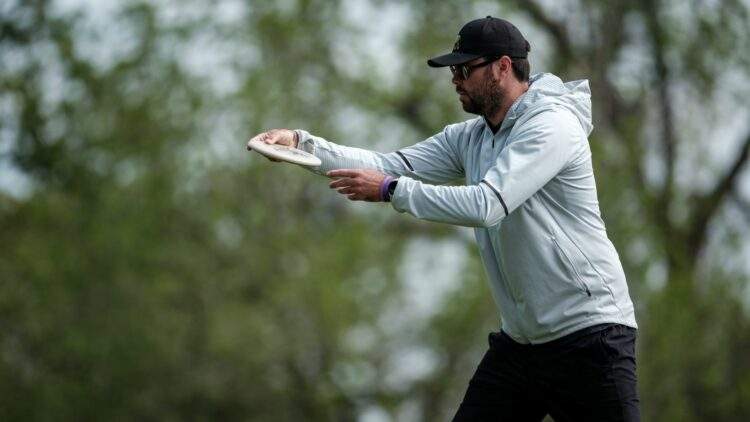
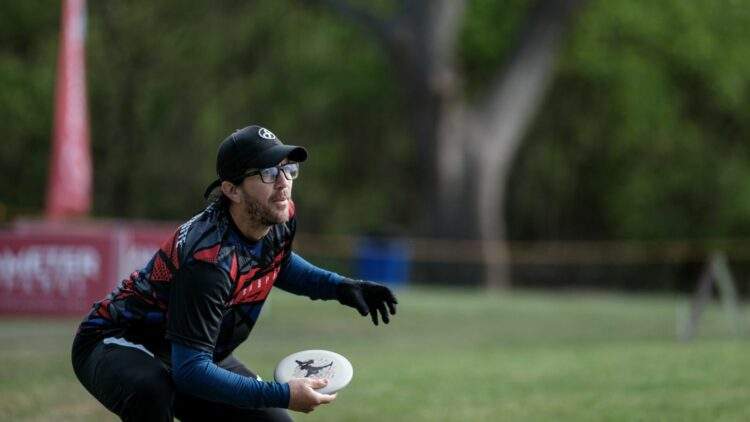 Practice with obstacles in your path, or brush in your normal swing path.
Practice with obstacles in your path, or brush in your normal swing path. 
 DRB: How many hours per week do you practice? Can you elaborate on your practice routine?
DRB: How many hours per week do you practice? Can you elaborate on your practice routine? SeanFace: Any west coast stops this year? I’ll be at the OTB Open and LVC
SeanFace: Any west coast stops this year? I’ll be at the OTB Open and LVC 
 Myle: Are you ever thought about an ‘is that good’ video where you give amateur your new signature disc and they tell is it good?
Myle: Are you ever thought about an ‘is that good’ video where you give amateur your new signature disc and they tell is it good? Cobra: Are there any out of production discs you wish you could bag but can’t justify because they’re hard to replace/expensive?
Cobra: Are there any out of production discs you wish you could bag but can’t justify because they’re hard to replace/expensive?
